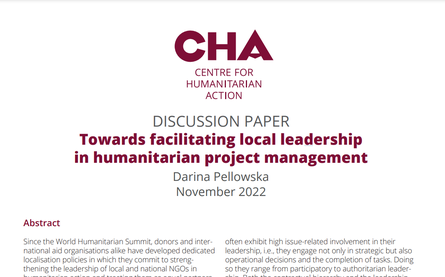
Since the World Humanitarian Summit, donors and international aid organisations alike have developed dedicated localisation policies in which they commit to strengthening the leadership of local and national NGOs in humanitarian action and treating them as equal partners. Yet, voices on the ground continue to claim that these commitments are rarely met in practice as many international actors retain most decision-making power, leaving the role of national and local NGOs limited to following the lead of their international partners’ pre-set plans and agendas. This discussion paper addresses project management and leadership approaches as typically implemented in humanitarian projects today as one of the underlying structural causes for the slow-moving progress in local leadership and participation of affected populations. It shows how the current approach entails a contractual hierarchy that leaves donors at the top who often exhibit high issue-related involvement in their leadership, i.e., they engage not only in strategic but also operational decisions and the completion of tasks. Doing so they range from participatory to authoritarian leadership. Both the contractual hierarchy and the leadership styles of donors at its top impede more equal partnerships in everyday humanitarian action.
Consequentially, to enable more cooperative leadership – not only between local and international actors, but also in interaction with other key stakeholders in humanitarian projects, such as aid recipients – one, donors needed to lean more towards laissez faire leadership, and/or, two, all partners needed to apply more inclusive horizontal management models. To illustrate the latter, the paper uses the example of Scrum and shows how an agile management approach can facilitate local leadership and participation of affected populations in operational humanitarian projects.
